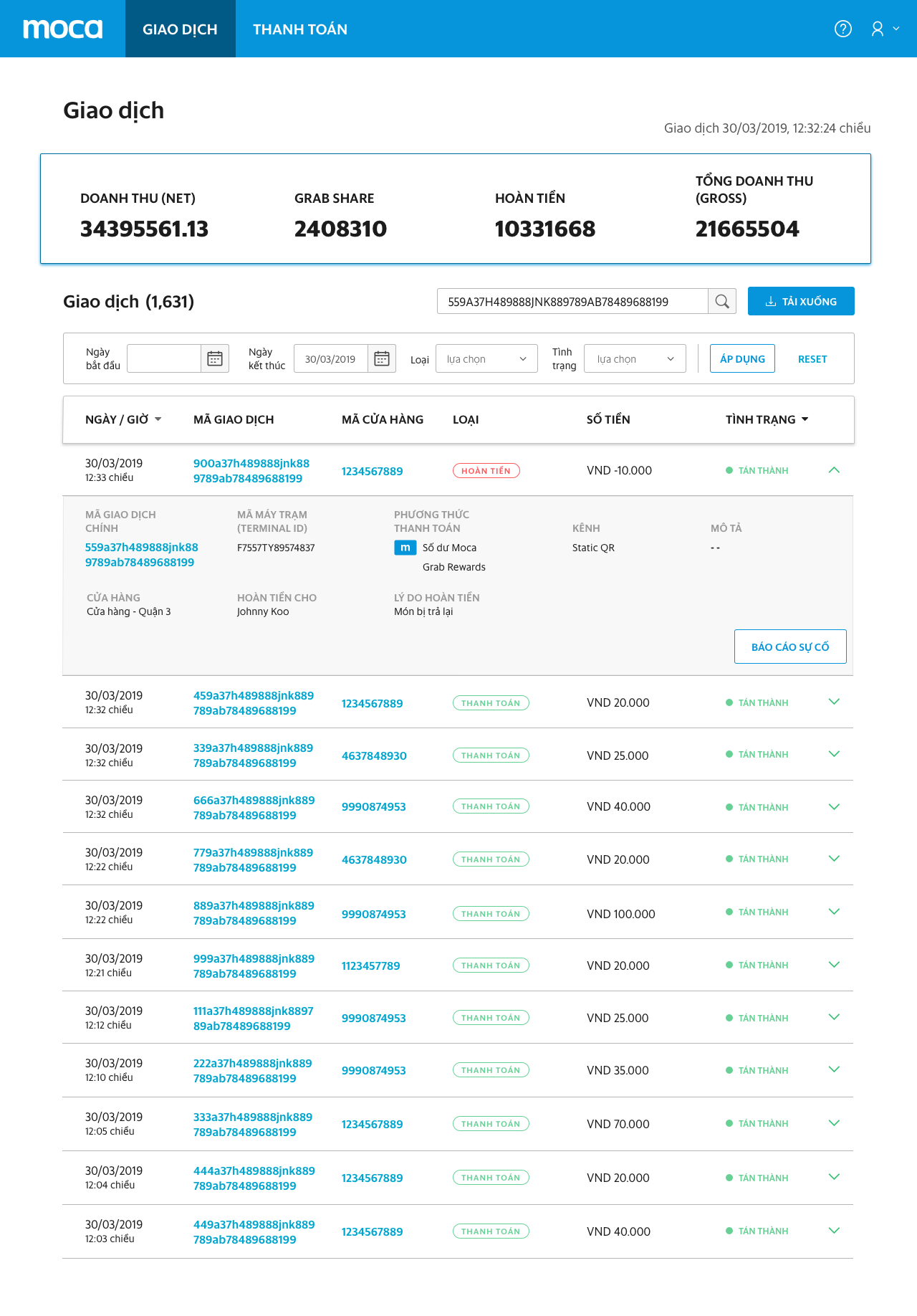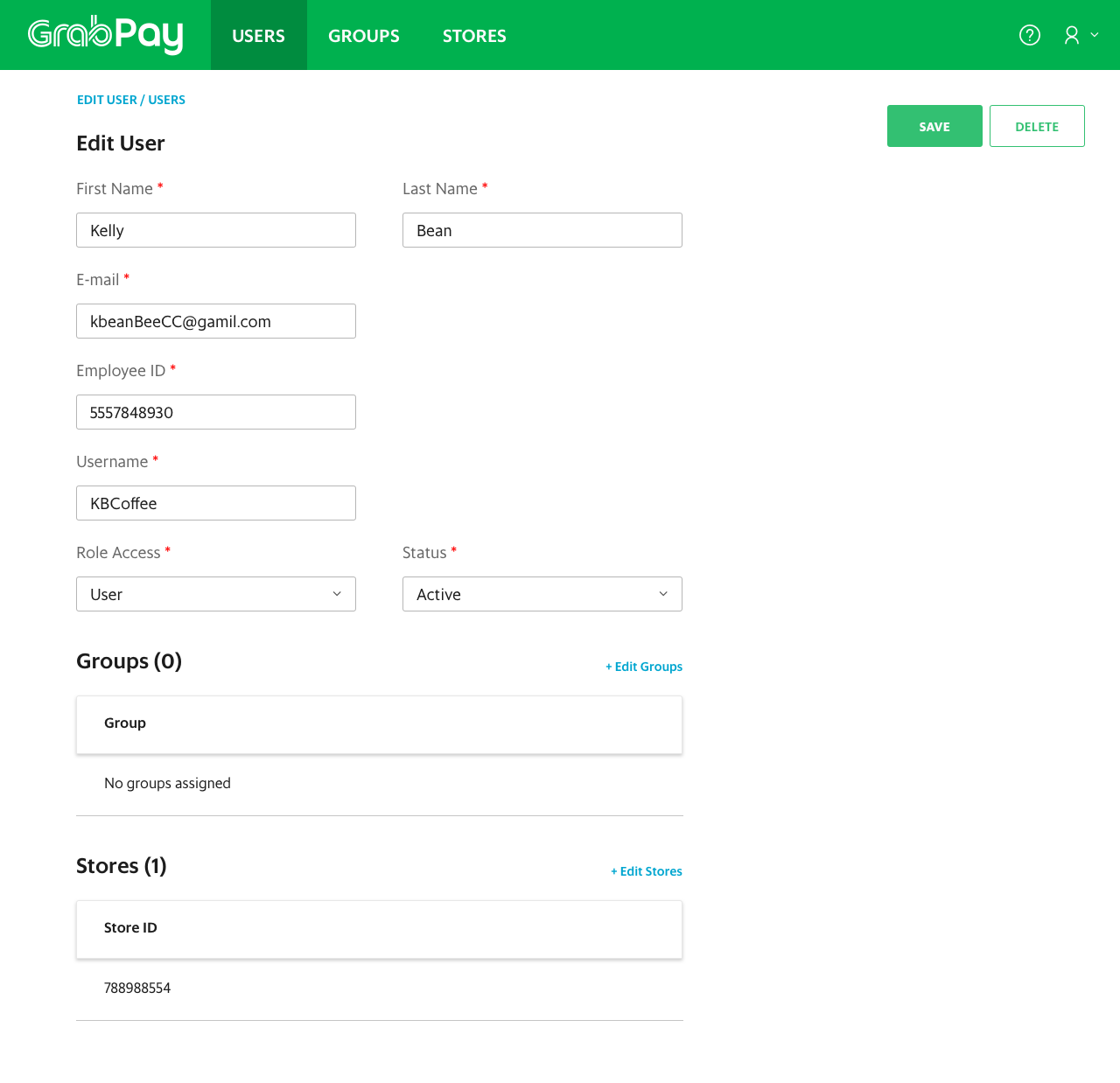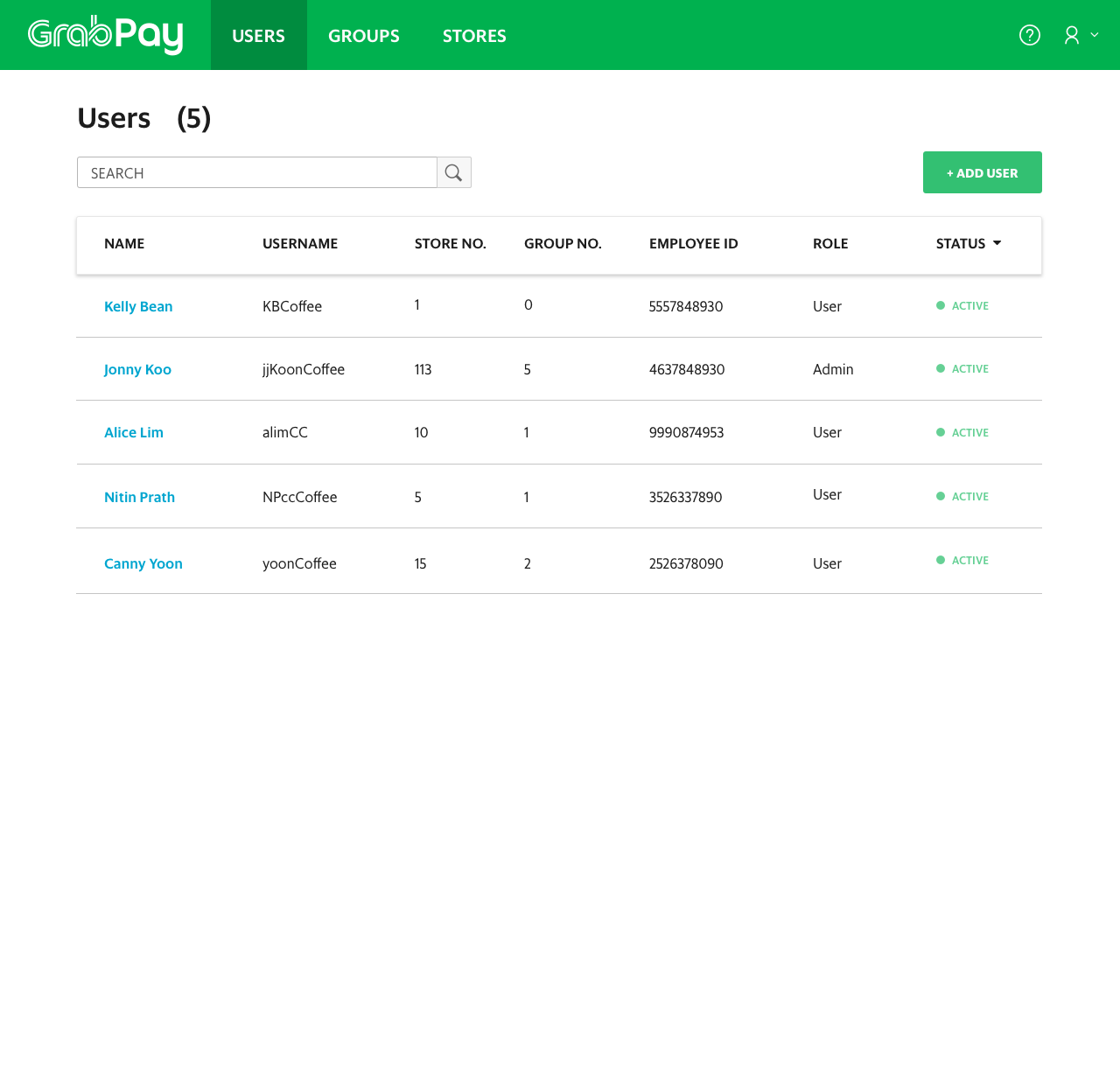Date: July 2018 - September 2019
Platform: React Native Web Responsive Application
Locations: Vietnam, Philippines
Role: Sr. product designer, promoted to lead after release
Problem:
Currently, Merchants on the Grab ecosystem do not have a means to access their business performance on Grab (business reports for reconciliation, finance management), lookup actionable insights on how to grow their business, engage with customers, manage customer relationships (CRM), and incentivize customers through campaign management. This is a far from an ideal experience as Merchants do not have any means to access Grab related business metrics in a self service manner or on demand. Furthermore, Grab’s rich data across segments can be leveraged to provide valuable insights to Merchants to better their business performance and expand their business outreach, but currently it is not being shared.


Solution:
The goal of Merchant Central was to solve some of these key pain points for medium to large Merchants and provide them with one consolidated portal to report and track business performance and gain insights to strengthen their business.
Eventually, Grab could then expand the product to help merchants with managing customer outreach, building customer relations, managing marketing campaigns, and managing inventory. Such a portal will be of significant value to customers and help drive Merchant stickiness within Grab.

Edit User

Admin Home Screen
Process:
Before just introducing a desktop-based application of the Merchant App, I decided it would be best to investigate if there were any problems that our merchants encountered while working with us as a company that the GrabPay App was not addressing. After running exploratory research in two countries, Indonesia and Malaysia, I learned (through synthesis) that there were challenges that we could incorporate with the initial design of the application:
One challenge was that merchants with headquarters had trouble helping their satellite stores with invalid or failed transactions and how to troubleshoot them. They had no view of the transactions and were either doing it audibly over the phone or driving to the locations themselves.
A second challenge was that merchants were struggling to reconcile their GrabPay transactions from the application and their bank account to the settlement report that we sent via email. There was no way for them to be proactive until after the settlement report was sent.
The initial launch of Merchant Central intended to solve the two merchant problems stated above as well as provide the basic functionality provided in the Merchant App:
1) Providing historical display of settlement reports
2) Displaying the status of transactions (Approved, Pending, Failed)
3) Providing full details of each transaction
4) Displaying all GrabPay transactions (Payment, Refund, Void)
5) Capability to issue refunds
6) Contact support
A key focus of the initial layout was to have two separate views, one pre-settlement and one post-settlement, to help support the current workflows established in many of the companies within their finance, accounting, and accounts payable team.
This baseline design was intended to be a product that could be sold on a subscription basis. The design not only should support different roles (user management), but also scale for a variety of use cases that connects the merchant experience.
For the second phase, I designed a user management portal that supports customer-facing side of the product. This administration portal was intended to enable our partner merchants to manage their own users and what stores and views they can access in the tool.
Visually, the designs are a draft layout that I have previously created in the past. I expect the team to eventually run a Keyword Brand exercise and once aligned, rebrand the product for a fresh new look.